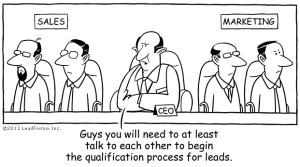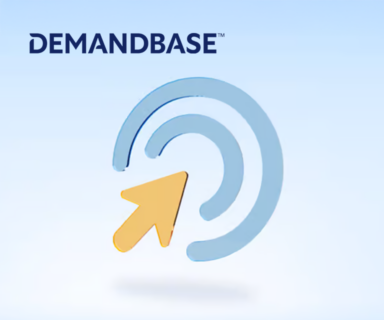I recently came across a Ted Talks video by Julian Treasure, a top-rated international speaker on “How to talk so people want to listen” . It got me thinking about ways Marketing can communicate with Sales effectively so sales is receptive to listening and taking away something concrete they will retain that will help them sell better.
Building the Bond

Marketing and sales have an organizational bond with strong inter-dependencies and need to be closely interconnected. Both are highly invested in each other’s success and influencing and driving revenue and growth. Marketing wants to enable and support sales to maximize their selling potential while sales, in turn, wants to utilize marketing and ensure their efforts are utilized and not wasted. While there can be differences of opinions on approaches or tactics, one thing is for certain – effective sales and marketing communication is an essential building block for both teams in reaching their respective goals.

As a marketer, you need to make sure your communication is solely focused on adding value to sales and giving them only the most important information they need to be successful. In other words, it’s not about conveying what you think they should know about what you know. It’s about delivering what they need to know – period. It’s not always the easiest distinction to make, but staying mindful of this is a good way to cut down on the extra noise.
The whole is greater than the sum of its parts
Good sales and marketing communication can help cultivate strong workable relationships and reinforce the value each group has for one another. Regardless of the team you’re on, success is largely about working together collaboratively to impact growth and revenue. In the end, working together will produce far more than either could accomplish working individually.

That said, sales can be opportunistic listeners and learners and wants information when they need it. With that in mind, marketing has to communicate in a way that sales won’t tune them out. If what you’re communicating isn’t relevant to what sales is selling today, chances are they will quickly stop paying attention. So as you deliver that next slide presentation, email a sales communication, or post to chatter, ask first if what you’re communicating is relevant to what sales needs to know now and pertinent to what they are selling today.
6 Tips how to communicate so sales’ wants to listen and learn
#1 – Be Brief: Assume the 5 second rule
When communicating with sales, say it in the opening sentence. Forget long lead-ins or rambling on with a build-up. Assume you have 5 seconds to grab their attention. Don’t leave it up to sales to interpret or figure out what the key takeaway is or what action you want them to take.
Tell them what you’re going to tell them in 5 seconds, tell them what they need to know, then tell them again what you told them.
#2 – Keep it Simple
Sales get barraged with requests. Sales people, like most of us, don’t retain lots of information at once. Say what you need to say very succinctly and net it out in bulleted points. Relate it to how it will help them sell better.
Keep your message to the point, and on-point if you want salespeople to follow…otherwise it ends up TLDR.
#3 – Make it “cut and paste” friendly and customizable
Don’t just be an informer when it comes to communication, give sales the necessary tools to take quick action. For example, craft an email template they can easily customize to their accounts to send, share a link to post in twitter, write the testimonial quote you want approved (and the email to request approval), or consider creating an infographic to visually tell the story. Make it so easy, they’ll feel crazy not to use it.
Sales sells because it’s what they do best; make it simple to help them follow through.
#4 – Be an active listener

By listening you can get valuable insights that should be heard and considered. Listening is not waiting for your turn to talk, interrupting or redirecting the conversation. It’s about being attentive and showing interest in sales challenges. Sitting in on sales calls is another great way to hear sales in action firsthand to get more real life perspective. Be sure to encourage feedback throughout or consider hosting mini sales focus groups to find out if the marketing you’re delivering is in fact positively influencing their sales cycles.
If you’re willing to listen to sales, they are more inclined to listen to you.
#5 – Use “sales speak”
If you want sales attention, keep the communication digestible and say it in a way they’ll remember it. Put customer pain points at the forefront and how your marketing message will help guide customer conversations and engage customers productively. The goal is to connect firmly with what sales is motivated by and connecting or impressing their customers is one way of doing that.
#6 – Sales peers are your best channel
The same way the voice of the customer speaks volume with buyers, the voice of sales peers carries a lot weight within sales teams. Showcase a rep using a new marketing tool or content piece and let them share in their words how they used it. Be sure to acknowledge and share their successes.
Internal sales champions can help facilitate broader sales adoption.
Do you have helpful tips on sales and marketing communications? Please share them in the comments section below or feel free to connect with me on LinkedIn and Twitter.



